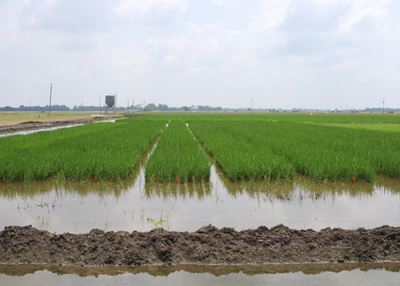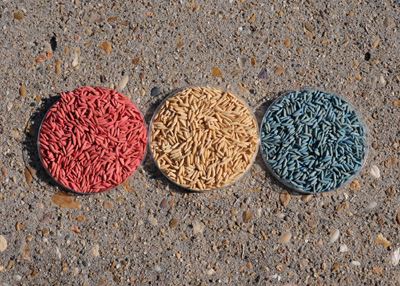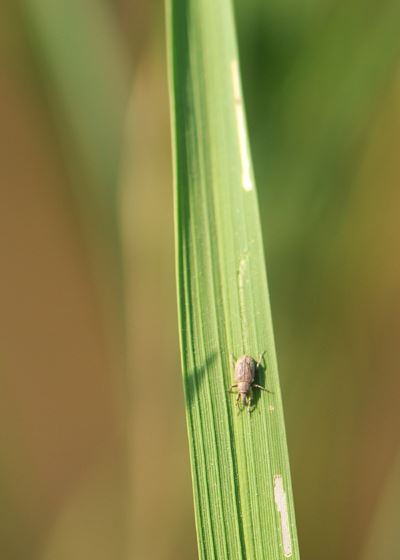|
MSU Researchers Find Rice Seed Treatments Work
MISSISSIPPI STATE, MISS.
After testing scores of samples taken from rice fields across the state, Mississippi State University scientists found that seed treatments are effective in managing the crop’s most troublesome insect pests.
“In Mississippi, we’ve been evaluating seed treatments for about five years,” said Jeff Gore, entomologist with the Mississippi Agricultural and Forestry Experiment Station and MSU Extension Service. “Our research has shown that rice grown with a seed treatment typically yields from 8 to 12 bushels more per acre than untreated rice. The main reason for that yield increase is rice water weevil control.”
Gore said seed treatments are effective in both conventional rice varieties and hybrids.
“Although they do not provide 100 percent control of rice water weevil, seed treatments do provide significant benefits in rice,” he said. “Because control is not absolute, a foliar insecticide application may be necessary to maximize control in some situations.”

Mississippi State University entomologists grow rice plots every year at the Delta Research and Extension Center in Stoneville to study the relationships between insect pests and different management practices, including the use of seed treatments.
Photos by Delta Research and Extension Center/Jeff Gore

Research at Mississippi State University’s Delta Research and Extension Center in Stoneville shows that using seeds treated with approved insecticides, such as the seeds shown on the left and right, helps control damaging insect pests and prevent yield loss. The seeds to the left and right were treated, while the seeds pictured in the center are untreated.
Insect management …
Gore works at the Delta Research and Extension Center in Stoneville. He said researchers take core samples about 4 inches in diameter and 8 inches deep from farms across the Delta, wash them and count the rice water weevil larvae.
“An infestation of one larva per core will result in about a 1 percent yield loss,” Gore said. “Typical infestations in the Delta range from 10 to 25 weevils per core in untreated fields, resulting in a 10 to 25 percent yield loss.”
Gore said that seed treatments provide other benefits to rice producers, too.
“Seed treatments provide good control against a whole complex of other rice pests,” he said. “Seed treatments help manage chinch bugs, grape colapsis, thrips and soil insects, such as wire worms and white grubs, and get the plants off to a good, healthy start.”

The rice water weevil, such as this adult on a rice leaf, is one of the most troublesome insect pests in rice, but seed treatments have proven to be effective in controlling them. The scars on the leaf are evidence of the rice water weevils’ feeding.
Performance under flood …
Seed treatments for row crops, such as corn, cotton or soybean, target early-season pests that are in the soil when the seed is planted. But rice seed treatments are different.
“We’re targeting primarily rice water weevils, and they only move into the field when producers establish the permanent flood about three to six weeks after planting,” Gore said. “So seed treatments for rice have to last longer than in other crops, because they are sitting in the field a lot longer.”
Gore said all of the seed treatments are water soluble, and water can have both positive and negative effects on seed treatments.
“Because rice is grown in aquatic or semi-aquatic environments, we needed to find out how different water management practices might impact the seed treatments’ performance,” he said.
Andrew Adams, an MSU graduate student from Greenville, set up tests in grower fields across the Delta and at the Delta Research and Extension Center.
“To determine the impact of a delayed flood, we looked at flood timings of six and eight weeks after planting, which is about two months that the seed treatment was sitting in the soil without having insect pressure,” Adams said. “Where we delayed the permanent flood until eight weeks after planting, the seed treatment was not compromised and no yield losses were observed.”
Flushing fields …
Adams also looked at the impact of flushing fields. Flushing a field is a form of irrigation where the field is brought to a shallow flood and then drained.
“Flushing is used for herbicide incorporation, seed germination or for irrigation during hot and dry conditions,” he said.
Adams tested zero, one and two flushes with water across a rice field to check the efficacy of three different seed treatments.
“We found that zero and one flush had no negative impact,” he said. “The seed treatments Cruiser and NipsIt were negatively impacted with the application of the second flush and yield losses were observed. However, Dermacor wasn’t negatively impacted by the application of the second flush.”
Seed treatment rates …
Gore and Adams also tested the efficacy of seed treatment rates in hybrid rice.
“Hybrid rice varieties are grown at 20 to 25 pounds of seed per acre, versus 75 to 85 pounds with conventional varieties,” Gore said. “Because seed treatment rates are based on a per-seed basis, we wanted to know if the lower seeding rate, and hence the lower seed treatment rate on a per acre basis, impacted insect control. It did not.”
No additional benefit was observed from increasing the seed treatment rate. Currently labeled rates for hybrid rice production are correct, Gore said.
“The management practice that showed significant improvement in rice water weevil control beyond the seed treatment was a foliar overspray with a pyrethroid on hybrid rice,” Gore said.∆
|
|